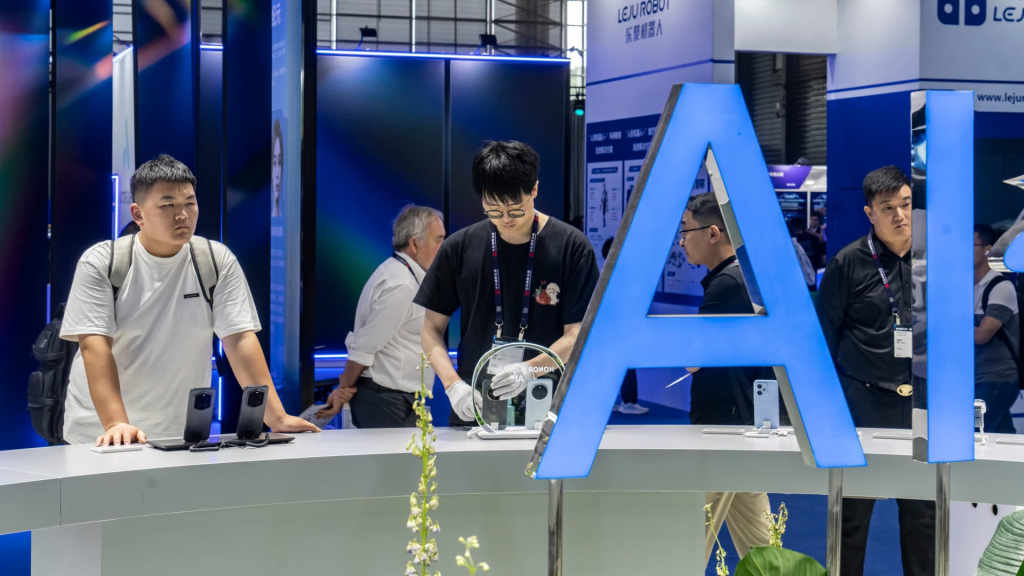BEIJING — A new generative artificial intelligence model from a Chinese startup is positioning itself as a formidable competitor to OpenAI’s ChatGPT, featuring coding capabilities and a more affordable pricing structure.
Moonshot, an Alibaba-supported startup, unveiled its Kimi K2 model late Friday. This open-source large language model takes inspiration from the disruptive strategies employed by China-based DeepSeek earlier this year. Open-source technology allows free access to source code, a tactic not widely adopted by major U.S. tech firms, with Meta and Google being notable exceptions.
In a relevant announcement, OpenAI CEO Sam Altman revealed early Saturday that the release of the company’s first open-source model would be indefinitely postponed due to safety issues. OpenAI did not respond immediately to a request for comment regarding Kimi K2 from Finance Newso.
One of Kimi K2’s key advantages lies in its ability to generate computer code, a feature that businesses find appealing as they explore options to enhance efficiency or reduce staffing costs through generative AI. OpenAI’s competitor, Anthropic, has also concentrated on coding applications with its recently released Claude Opus 4 model.
Upon its launch, Moonshot asserted via social media platforms X and GitHub that Kimi K2 outperformed Claude Opus 4 on two critical benchmarks, and exhibited superior overall capabilities compared to OpenAI’s GPT-4.1 model in various industry assessments.
“Without a doubt, Kimi K2 is a globally competitive model, and it’s open sourced,” stated Wei Sun, a principal analyst in artificial intelligence at Counterpoint, in an email on Monday.
Cost-Effective Solution
“Additionally, it boasts lower token costs, which makes it particularly appealing for large-scale or budget-conscious applications,” she continued.
The new K2 model is accessible for free through Kimi’s app and web interface, unlike ChatGPT or Claude, both of which require monthly subscriptions for their advanced AI models.
According to its website, Kimi charges just 15 cents for every 1 million input tokens and $2.50 for every 1 million output tokens. Tokens serve as a metric for quantifying data processed by AI models.
In stark contrast, Claude Opus 4 charges $15 for every million input tokens and $75 for the same output amount. Meanwhile, GPT-4.1 sets its prices at $2 for input tokens and $8 for output tokens.
On GitHub, Moonshot AI has outlined that developers are free to utilize K2 in any manner, with the condition that they acknowledge “Kimi K2” in their user interface if their commercial service exceeds 100 million monthly active users or generates $20 million in monthly revenue.
Growing AI Marketplace
Initial feedback for K2 across both English and Chinese social media platforms has been predominantly positive, despite some reports indicating instances of “hallucinations,” a common challenge in generative AI where models fabricate information.
One user, Pietro Schirano, founder of startup MagicPath which develops design AI tools, expressed on X, “K2 is the first model I feel comfortable using in production since Claude 3.5 Sonnet.”
Last year, Moonshot garnered significant attention with its chatbot, which served as an alternative to ChatGPT in China, a market where the latter is unavailable. Nevertheless, new entrants like ByteDance and Tencent have since intensified competition, alongside Baidu’s enhancements to its search engine through AI technology.
This recent launch comes at a time when investors are keenly exploring Chinese alternatives to U.S. tech as the race in global AI development heats up.
Amid the buzz generated by DeepSeek, the privately-held firm has yet to announce a major advancement to its R1 and V3 models. Meanwhile, Manus AI, another Chinese startup that emerged earlier this year, has transitioned its headquarters to Singapore.
Over in the U.S., OpenAI is also yet to provide details regarding GPT-5.
Counterpoint’s Sun commented that the development of GPT-5 may be consuming resources that could otherwise facilitate progress on OpenAI’s open-source model, noting the challenges inherent in launching a powerful open-source option without hindering the competitive edge of proprietary models.
Rival to Grok 4
Kimi K2 is not the only recent introduction from the company. Last month, Moonshot released a Kimi research model that reportedly matched Google’s Gemini Deep Research with a score of 26.9 and outperformed OpenAI’s version on a benchmark known as “Humanity’s Last Exam.”
The Kimi research model was even referenced during Elon Musk’s recent launch of Grok 4, which attained a score of 25.4 on the same benchmark but achieved a higher score of 44.4 when permitted to utilize various AI tools and web searches.
Winston Ma, an adjunct professor at NYU School of Law, remarked, “Kimi-Researcher signifies a transformative shift in agentic AI,” highlighting the model’s ability to independently make numerous decisions simultaneously to accomplish complex tasks.
“Rather than simply generating coherent responses, it showcases autonomous reasoning at an expert level — an advanced cognitive capability that had previously been absent in large language models,” Ma added. He is also the author of “The Digital War: How China’s Tech Power Shapes the Future of AI, Blockchain and Cyberspace.”
— Finance Newso’s Victoria Yeo contributed to this report.


























